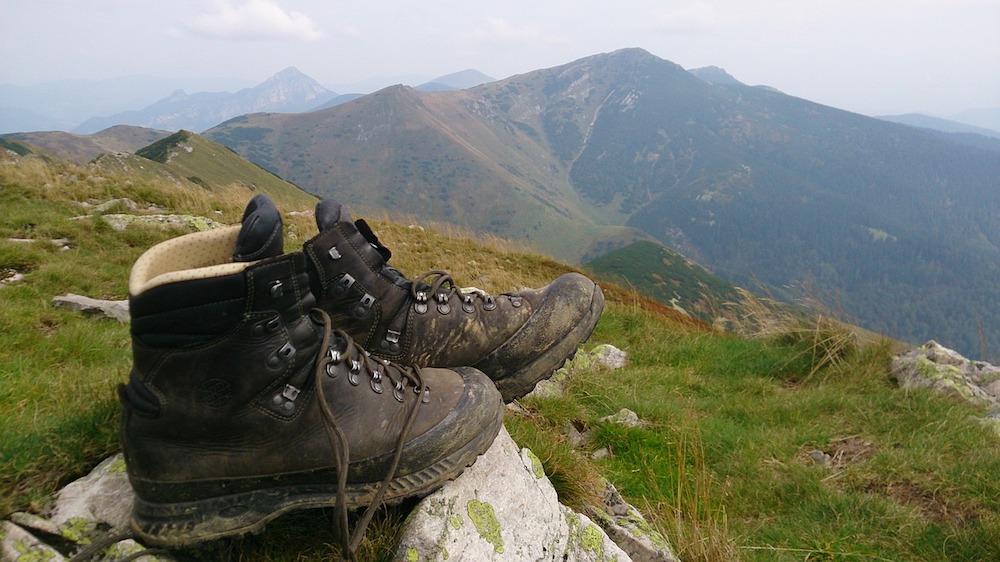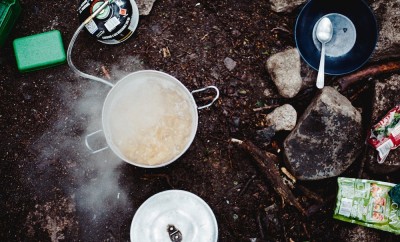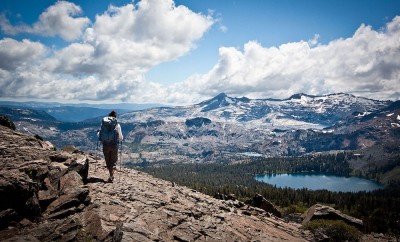Adventure Travel
Backpacking Essentials: Part 2

If you are wanting to seek the adventure of backpacking, but don’t know where to start, then this series of backpacking essentials articles for you. It seems like backpacking is a simple enough idea, and that the gear is self explanatory. However, there are several items that may make your life and trip easier that you might not know about if you have not actually spent several days living out of a backpack. Here is a list of Backpacking essentials that you will need to keep your body going, and to ensure your health and safety out on the wild.
The second installment of the backpacking essentials series will look at how to care for your skin and your feet when you step out into the wild. The feet and skin are two areas that can be easily overlooked, yet they can make your trip miserable if they are not taken care of.
Feet:
Shoes:
When you are heading out for several days in the wild, one of the most important pieces of equipment that you will buy are your shoes/boots. Taking care of your feet is SO important when backpacking. After all, your feet are going to be your primary source of transport for several days. When choosing your shoes, it is important to read some reviews. When you are two days from anywhere is not the time to have your shoes break or to have your feet hurting so bad that you cannot get to safety. After choosing your shoe or boot, it is important to break them in BEFORE you head out on your trip. This will prevent issues of blisters and rubbing that can happen when you are breaking shoes in. When you are home is the best time to nurse blistered and bleeding feet, not when you are out in the middle of nowhere.
Socks:
Moisture on your feet can cause some serious issues, including blisters, rot, and fungus. The most important tool for getting that moisture off of your feet is wool socks. There are synthetic wool materials that are meant to replace wool, but nothing works quite as well as the original. Wool is great at wicking away moisture, and keeping you warm even when it is wet. Think about a captain’s pea coat from any era of seafaring. It has been an effective way to keep humans dry and warm for centuries.
Moleskin:
Despite all of your planning and research, blisters can still happen. Moleskin is a padded adhesive bandage that can be cut to go around a blister on your foot. The idea is to create a padded area around the blister to keep the weight off of the blister itself. Broken blisters on the bottom of your feet is a serious bummer (trust me). Moleskin can make waking a possibility when it would not be otherwise. There should always be moleskin in your pack.
Skin
Bug repellent:
It seems that the farther that you go away from civilization, the bigger and more numerous the bugs get. The swarms of mosquitos near pristine mountain lakes will surprise you. There are several methods of bug control out there. Liquid repellent is a time tested and effective method, but avoid aerosol versions for high altitudes. However, for those with sensitive skin and noses, there are devices that can either create a cloud of repellent around you, or emit a sound frequency that keeps the bugs away. There is always mosquito netting if these options do not work for you.
Sun Block:
When planning to spend several days out in the direct sun (hopefully), it is important to protect the skin from harmful UV rays. Hats are great ways to block the sun, but it is wise to bring along your favorite sunblock lotion as well. If you are headed to high altitudes, then you might want to avoid aerosol options.
Non-aerosol Deodorant
You are going to be out in the woods for several days working and sweating. If you are going alone, and don’t mind your own musk, then by all means, skip this item. However, if you are planning on traveling with other people, you will want to pack a good deodorant. Again, avoid aerosol deodorant at high elevations.
These are the items that will care for your feet and skin on your backpacking adventure. We hope that you have a better idea about how to prepare for your trek. Look for the next article in the backpacking essentials series when we look at several essential gear items, including your pack, navigation equipment, and shelter.





0 comments